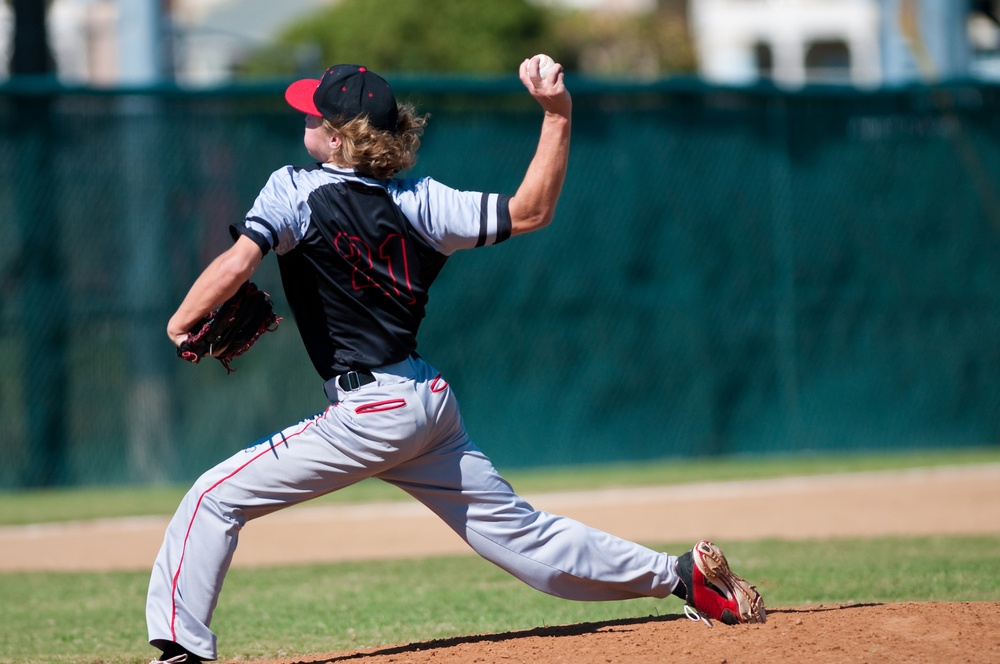Repetitive overhead sports, such as tennis or throwing sports, can lead to various conditions in the shoulder. One common condition is a SLAP tear (Superior Labrum Anterior Posterior). This refers to a tear in the ring of cartilage that surrounds the glenoid (socket bone) in the shoulder. The labrum is composed of cartilage and functions to create greater depth to the socket, as well, greater stability. The labrum attaches to the biceps tendon at the top of the glenoid. In fact, it anchors the biceps tendon to the bone and, therefore, this is the weak link that leads to tears in the labrum. The biceps tendon, in the shoulder, provides restraints to the shoulder joint. Therefore, a tear in the labrum at the site where it meets the biceps tendon can be a cause of significant pain and loss of stability. This is the typical SLAP tear.
Recreational or professional athletes that suffer a SLAP tear will experience pain, weakness, clicking and, possibly, limited range of motion in the shoulder. Commonly, the symptoms present a few weeks after the inciting sports event. Many players experience a decrease in athletic performance.
An orthopedic surgeon specializing in sports medicine is the typical doctor that treats SLAP tears. The orthopedic surgeon will do a history and physical, obtain routine x-rays and, likely, get an MRI (magnetic resonance imaging) to confirm the diagnosis.
SLAP tears are categorized into seven different types of tears based on their pattern of tearing, degree of involvement of the biceps tendon anchor, and extension into other stabilizing structures in the shoulder joint.
The orthopedic surgeon may choose to, initially, treat the patient with physical therapy and anti-inflammatory medication. If symptoms do not improve then shoulder arthroscopic surgery is often performed. During the shoulder arthroscopy, and depending upon the type of tear, degree of involvement with the biceps tendon, and extension of the tear into other structures, the orthopedic surgeon may choose to:
- Repair the labrum;
- Debride (clean up) the labrum; and/or
- Stabilize the biceps tendon to another part of the bone (biceps tenodesis).
Another common condition in overhead sports is an injury to the rotator cuff tendons. The rotator cuff is a group of four tendons whose function involves movement for the shoulder as well stability to the joint. A rotator cuff tear can occur from above the tendons (where the acromion bone may develop a spur and dig into the tendon) or it may occur from below the tendons (from inside the joint itself). When there is damage from below to the under-surface of the tendons that is commonly called internal impingement.
Internal impingement can represent a wide spectrum if conditions that include:
Partial under-surface rotator cuff tear, SLAP tear, cartilage damage to the back portion of the glenoid ( socket bone), or scarring of the back portion of the capsule that surrounds the shoulder joint. All this may be related to the micro-instability caused by a SLAP or labrum tear and/or tightness of the back capsule.
Overhead athletes, typically, will present with pain in the back of the shoulder in addition to the symptoms of a SLAP tear (already mentioned). They may, also, experience pain with throwing.
A sports medicine orthopedic surgeon diagnoses this condition based on history and a physical exam, x-rays, as well as an MRI. Treatment may include physical therapy for rotator cuff strengthening and capsular stretching. If symptoms do not improve then an orthopedic surgeon may perform a shoulder arthroscopy to either repair or debride the rotator cuff tear, repair the labrum, and/or release the posterior (back) capsule of the shoulder joint.
Shoulder injuries in overhead athletics, such as tennis or throwing sports, are very common. Most often these injuries can be treated conservatively. If surgery becomes warranted then it can be done with minimally invasive techniques with, typically, excellent results.




